Wandering through Montmartre’s charming streets, I felt like I was in a small village tucked right inside Paris. The cobbled lanes, cozy cafés, and the ever-present hum of artists make this neighborhood a special pocket of the City of Light.
But honestly, the real magic happens when you spot Sacré-Cœur Basilica. Its bright white domes rise above everything, easy to see from just about anywhere in the city.
Climbing up to the Sacré-Cœur gave me breathtaking panoramic views of Paris, making every step and hill totally worth it. The city just opens up before you—rooftops, monuments, all glowing in the sunlight.
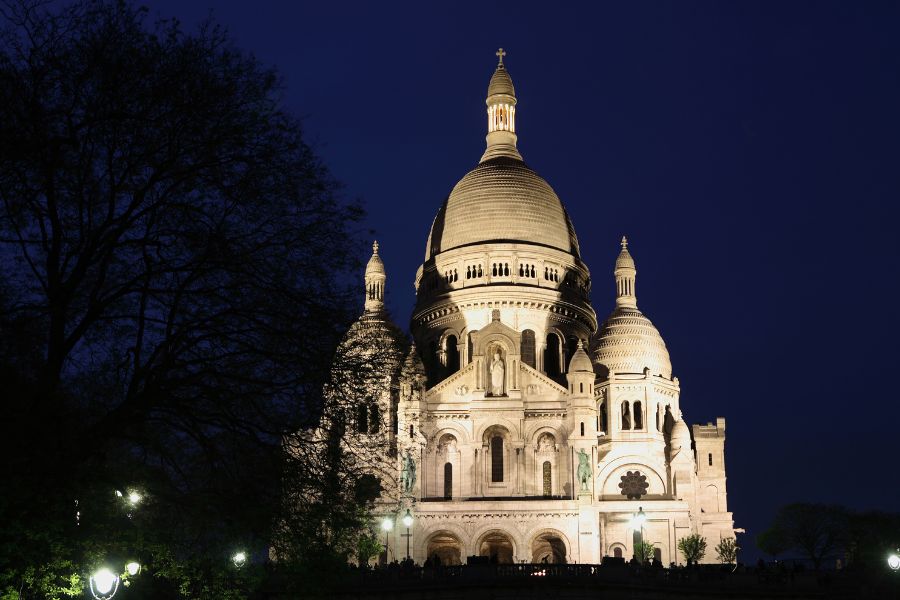
Inside the basilica, I felt a peaceful energy. Travelers and locals come here to reflect, admire the art, or just enjoy the quiet.
Montmartre’s atmosphere carries the legacy of artists who found inspiration on these streets. I got swept up in the creative mix, the calm, and the lively village feel that make this place stick in your memory.
The History and Spiritual Significance of Sacré-Cœur Basilica
Sacré-Cœur stands out in Paris for more than its dazzling white domes. It’s a place where stories of faith, history, and community all come together.
This hilltop church has roots deeper than its foundations, and a spiritual heart that draws millions—pilgrims, tourists, and the just-plain-curious, like me.
Origins and Architecture
Sacré-Cœur sits high on Montmartre, the tallest spot in Paris. The French built it after the Franco-Prussian War.
They wanted a symbol of hope and healing. Construction started in 1875, and workers finished the basilica in 1914, though World War I put off its consecration.
The Romano-Byzantine style really stands out. The domes and curves break away from the Gothic look you see elsewhere in Paris.
Sacré-Cœur stays bright because of its white travertine stone, even when the weather turns gray. Inside, a giant mosaic of Christ with open arms greets you.

From the steps, Paris feels close—Eiffel Tower in the distance, busy markets below, all within view.
A Place of Pilgrimage
What sets Sacré-Cœur apart for me is its role as a center for prayer and pilgrimage. Since 1885, people have kept up perpetual adoration—there’s always someone praying here, day or night.
Visitors come for quiet moments, to pray, or to join mass, surrounded by the gentle glow of candles.
The air inside feels different. Even with the buzz of tourists and school groups, a calm settles over the basilica that I haven’t felt anywhere else in Paris.
It’s a special place for Christians, but anyone can soak in the peace—and the view. Some people come for a spiritual break, others just for the beauty.
Famous Visitors and Legends
Montmartre, the hill of martyrs, adds a layer of legend to Sacré-Cœur’s story. Local tradition says Saint Denis, Paris’s first bishop, was beheaded right here.
Artists like Picasso and Renoir once wandered these streets, finding inspiration in both the village and the basilica’s silhouette.
French leaders, writers, and travelers have all climbed these steps—some to pray, others just to take in the view. Over time, Sacré-Cœur became part of Paris’s identity, a spot for anyone wanting a glimpse of the city’s soul.
Breathtaking Views from the White Dome
The Sacré-Cœur Dome rewards anyone willing to climb with some of the clearest, most impressive sights in Paris. It’s not just a view—it’s a new way to see the city, its landmarks, and the daily rhythm of life below.
Climbing to the Dome
Climbing to the top of the Sacré-Cœur Dome isn’t easy. The narrow staircase twists up about 280–300 steps, spiraling higher above the crowds.
You won’t find an elevator here—each step is part of the adventure.
On my way up, I met other travelers pausing for breath or snapping photos through tiny windows in the walls. Sometimes, it felt like moving through a giant seashell.
The climb got tiring, but catching glimpses of Paris through the stone kept me going.
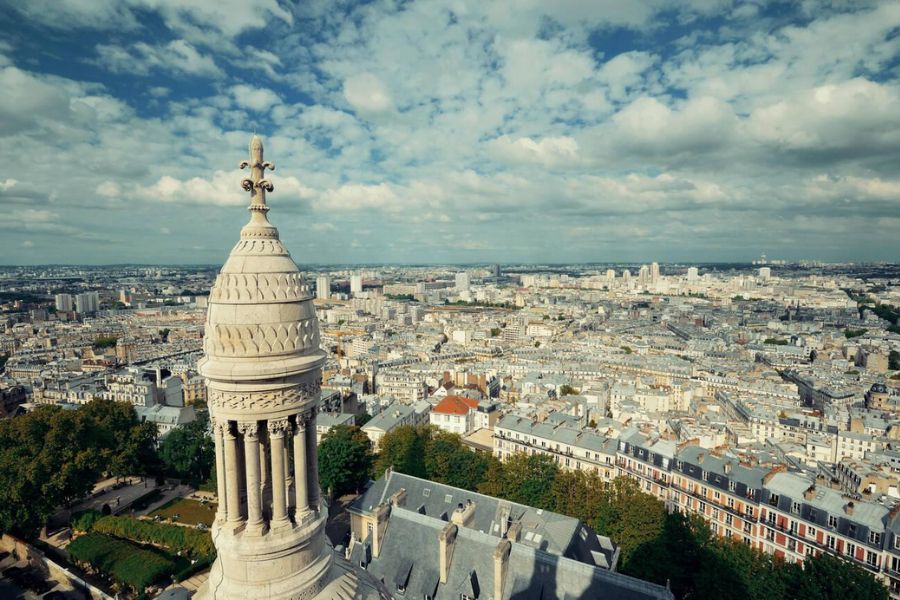
Near the top, sunlight started pouring in. Everyone’s faces showed anticipation as we got closer to the summit.
Stepping out onto the viewing platform, I forgot all about the climb.
360° Panoramic Scenes Over Paris
The dome’s terrace wraps all the way around, giving a full 360-degree view. Paris stretches out—rows of rooftops, winding streets, and the city buzzing below.
Early mornings bring soft light, and in the afternoons, the sun makes everything gleam.
From up here, I spotted endless neighborhoods and famous monuments. The heights offer a peaceful contrast to the busy streets of Montmartre.
Tourists took turns at the ledge, pointing out landmarks, while others just stood and breathed in the city.
I loved walking the whole circle slowly. Every step showed a new angle—a quilt of buildings, church spires, and wide avenues.
No other viewpoint in Paris felt this personal or complete.
Spotting Icons: Eiffel Tower to Seine River
The Eiffel Tower jumped out at me right away, its lattice against the sky. It looked different from up here—far off, but clear.
I could also see the Seine River, curving through the city, dotted with bridges and boats.
I lost track of time picking out sights: the golden dome of Les Invalides, Notre-Dame’s towers, the shimmering glass of La Défense.
I started pointing things out to strangers—“There’s the Arc de Triomphe!” It turned into a shared moment, everyone helping each other spot the city’s icons.
From the dome, Paris looked endless, with Sacré-Cœur quietly watching over it all. The familiar felt new, and I didn’t want to leave the view behind.
The Heart of Montmartre: Art, Cafés, and Village Vibes
Art sparkles from busy squares, and café terraces fill with locals and dreamers. Montmartre has old-world streets alive with history, creativity, and romance, all under the watch of Paris’s white dome.
Place du Tertre: Artists at Work
Place du Tertre is Montmartre’s open-air studio. Painters and sketch artists set up their easels all around the square.
Some work quietly, focused on their canvas, while others call out, offering quick portraits to passing tourists.
I watched a woman sketch a Paris street scene in under ten minutes. Her calm focus drew a crowd, myself included.
Many artists have painted here for years, keeping Montmartre’s creative spirit alive.
If you’re feeling bold, get your portrait drawn. Prices usually start around €20, but it’s smart to check the style first.
I loved how the artists captured more than faces—they caught the mood of Montmartre itself.
Charming Cafés and Boutiques
Cafés spill onto the cobblestones. I grabbed a table outside, sipped coffee, and watched artists pass by.
The sunlight, the chatter, and the smell of fresh pastries made me want to stay longer.
Around Place du Tertre, small boutiques line the streets. Some sell handmade jewelry or vintage treasures, while others display local fashion.
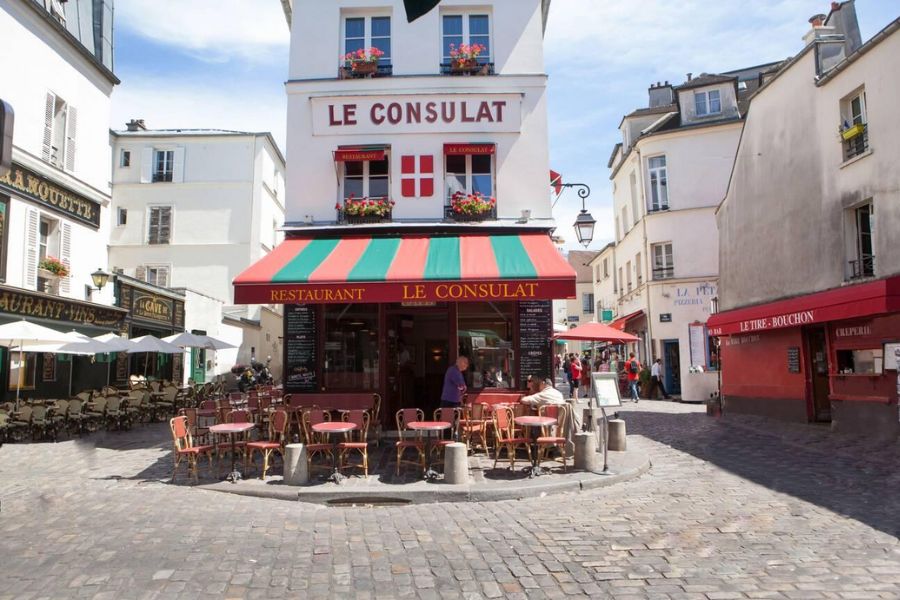
Must-try options in the area:
- Le Consulat: Classic café for coffee or lunch
- La Maison Rose: The famous pink spot for photos and desserts
- Marché Saint-Pierre: Legendary fabric shop bursting with color
Shopping or snacking here is all about slowing down and soaking up the village vibe. Every storefront feels different, and shopkeepers are usually happy to chat.
Creative Atmosphere and Romantic Spots
Montmartre feels like a world apart from the rest of Paris. Creativity is everywhere.
Musicians play on corners, poets scribble in notebooks, and the streets invite you to pause and listen.
One evening, I watched a guitar player sing under the streetlights on Rue Norvins. Couples danced, friends clapped along.
It felt more like a village festival than a big city street.
For romance, the quiet park behind Sacré-Cœur is hard to beat. The sloping lawn offers wide views across Paris.
It’s perfect for a picnic or just sitting and watching the city lights flicker on at sunset.
Cobbled Streets and Living Heritage
Walking Montmartre’s cobbled streets, I felt the centuries beneath my feet. The stones twist and climb, passing ivy-covered homes and hidden gardens.
Vintage street lamps glow softly at dusk, adding to the charm.
Locals greet each other by name here. Bakers know their regulars.
A small grocery on Rue Lepic felt like stepping back in time.
Look for painted street signs and carved doorways. Each one hints at Montmartre’s past as an artists’ haven.
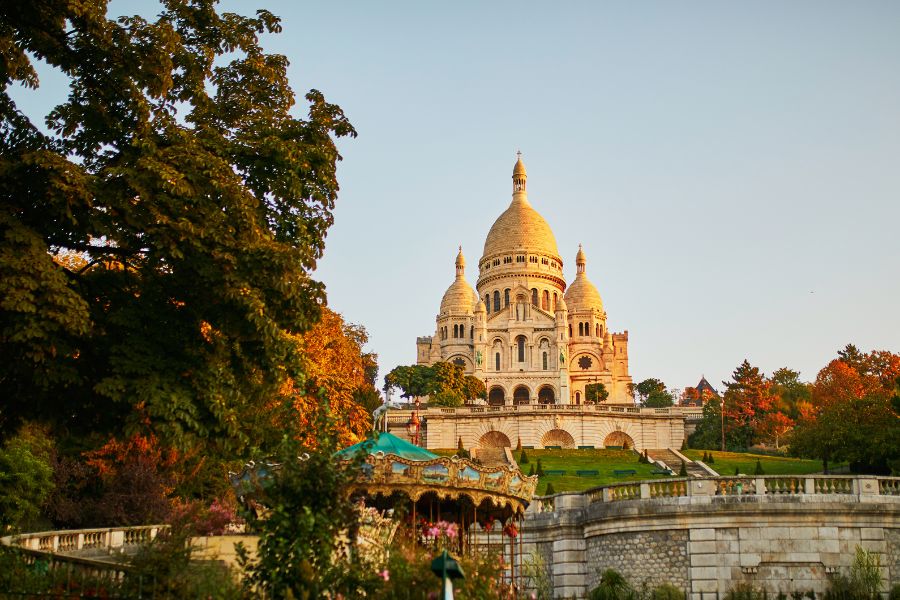
Even though Montmartre is part of Paris now, it holds onto its roots with a lively, welcoming energy.
Museums, Hidden Gems, and Offbeat Montmartre
Montmartre buzzes with creative stories, quirky corners, and places most tourists never find. I discovered a side of Paris here that felt more like a secret village than a city, packed with surprises and hidden landmarks.
Exploring Montmartre Museum
The Montmartre Museum (Musée de Montmartre) sits in an old house where famous artists once lived. Inside, I wandered through paintings, sketches, and photos showing Montmartre’s history as an artists’ neighborhood.
Claude Monet, Pierre-Auguste Renoir, and Suzanne Valadon walked these gardens.
The museum’s rooms tell stories from cabaret days and bohemian nights. Some rooms open right onto peaceful gardens, once painted by Renoir.
I lingered by a window overlooking the rooftops, soaking in the same view that inspired so many masterpieces.
There’s a small café in the gardens—a quiet spot to sip coffee, far from the busy Sacré-Cœur steps.
| Admission Information | Tip |
|---|---|
| Tickets required (check for current prices) | Visit early to avoid crowds |
The Wall of Love
The “Wall of Love” (Le Mur des Je t’aime) surprised me. It hides in a little park near Abbesses metro.
Blue tiles cover the wall, each one spelling out “I love you” in more than 250 languages.
Even on rainy days, couples and friends stop here, searching for their language or snapping photos.
I watched people smile when they spotted “je t’aime” or another phrase in bold script.
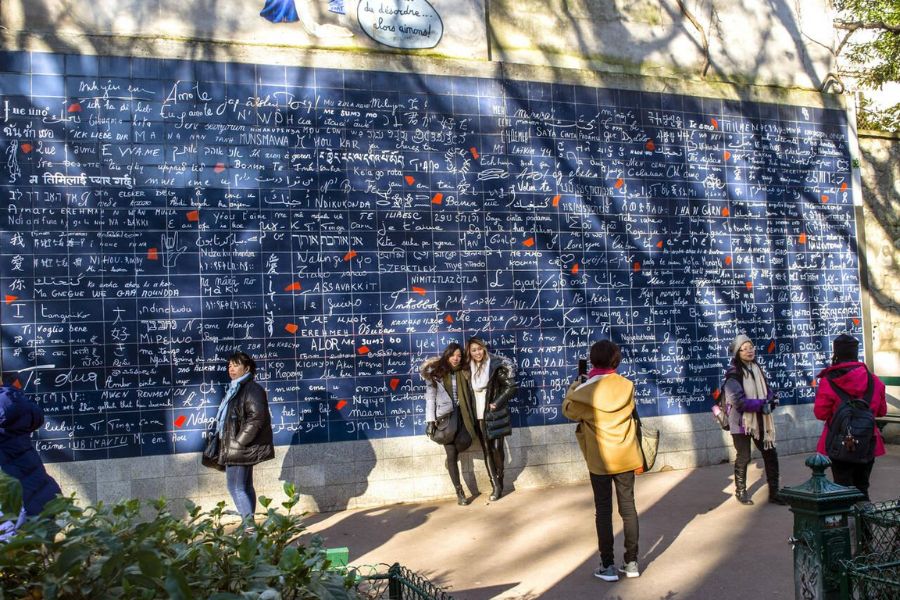
A visit only takes a few minutes, but it’s worth it. The Wall of Love feels hopeful—a sweet, quiet tribute to Montmartre’s romantic streak.
Quick Facts:
- Free to visit
- Nearest Metro: Abbesses
- Great spot for photos
Montmartre Vineyard Experience
Most people don’t realize there’s a real vineyard left in Montmartre: Clos Montmartre. Old stone walls and winding lanes hide this tiny vineyard, where Gamay and Pinot Noir grapes grow on the hillside.
When I passed by in October, the grape harvest was underway. Every year, locals celebrate the “Fête des Vendanges,” a festival with parades, wine tastings, and music.
The wines go to charity auctions, but just seeing the green vines against the city felt special.
You can tour the vineyard during the harvest festival or by booking ahead with the Montmartre Museum.
Insider Tips:
- Look for the pink house nearby, one of Montmartre’s most photographed spots.
- Tours available during special events.
Montmartre Cemetery: Stories and Sculptures
Montmartre Cemetery sits close to the busy cafes, yet somehow feels hidden away—almost like you’ve wandered into a quiet park. The walkways twist beneath tall chestnut trees, and the place just has this peaceful vibe.
Many artists, writers, and musicians rest here, and you can sense the creative energy. I noticed gravestones for Dalida, the much-loved French singer, and Edgar Degas, the painter. The cemetery features all kinds of sculptures—some are understated, others dramatic and bold.
Honestly, the art here moved me just as much as any gallery. Sure, I didn’t see the Mona Lisa (she’s tucked away at the Louvre), but I did spot names that shaped how I see Paris.
Notable graves include:
- Dalida
- Edgar Degas
- François Truffaut (filmmaker)
Wide paths make it easy to wander, and there’s a helpful map at the entrance if you want to find the most famous graves.
Getting Around Montmartre: Transport, Routes, and Practical Tips
Montmartre’s winding streets and steep hills can charm you, but they can also trip you up if you’re not prepared. The right mix of transport, walking routes, and a little planning makes any visit smoother, whether you’re with family or on your own.
Metro, Funicular, and Walking Paths
Montmartre connects easily to the rest of Paris by Metro. I usually hop on Line 2 and get off at either Anvers or Abbesses. Anvers drops me near the base of Sacré-Cœur, while Abbesses opens onto a lively square with cafes and, more often than not, street performers.
Just a few steps from Anvers, I always spot the Montmartre Funicular. It’s a short cable car that zips you up the steepest part of the hill. The ride takes maybe two minutes and you can use a regular metro ticket. It’s a lifesaver if my legs are tired after a long morning.
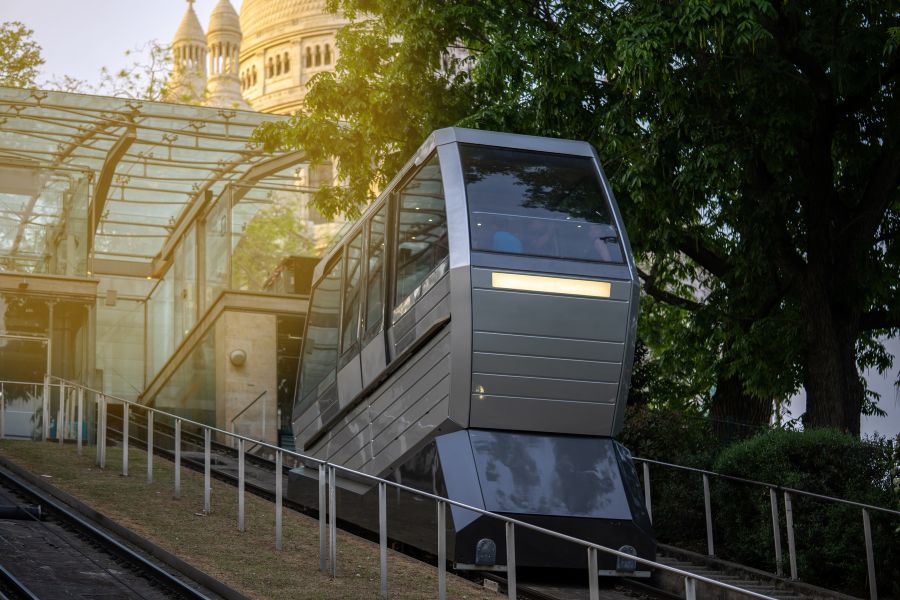
If you’re feeling up for it, walking Montmartre’s cobblestone paths and staircases feels like stepping into a Paris postcard. There’s the grand staircase to Sacré-Cœur, and plenty of hidden lanes with their own stories. I like to look out for mosaics and murals—they appear where you least expect.
| Transport | Closest Stop | Best For |
|---|---|---|
| Metro | Anvers/Abbesses | Quick city connections |
| Funicular | Gare Basse | Easy uphill travel |
| Walking | Anywhere | Hidden local scenery |
Rue Lepic and Rue des Abbesses
A walk down Rue Lepic and Rue des Abbesses is a must.
Rue Lepic winds up from Boulevard de Clichy, passing old windmills, bakeries, and the Café des Deux Moulins from “Amélie.” Early mornings are magic here, with bakeries opening and locals starting their day. I usually grab a croissant and watch delivery bikes weave through the bends.
Rue des Abbesses really feels like Montmartre’s heart. It’s always lively, with markets selling cheese, flowers, and sometimes art from pop-up stalls. The square, Place des Abbesses, often has a carousel spinning, kids laughing, and the quirky Art Nouveau entrance to the Abbesses Metro station.
I love poking into the local shops—quirky boutiques, chocolatiers, and old bookstores. Both streets stay pretty flat, so they’re easy for families or anyone who wants to take it slow.
Family-Friendly Activities
Montmartre isn’t just for art lovers—it’s a great spot for families too. The Montmartre Funicular is fun, especially with kids. It saves everyone’s energy and honestly, it feels like a tiny adventure.
The carousel at Place des Abbesses is a favorite with little ones. When the weather’s nice, parks like Square Louise Michel below Sacré-Cœur make perfect picnic spots, and you get those classic Paris views.
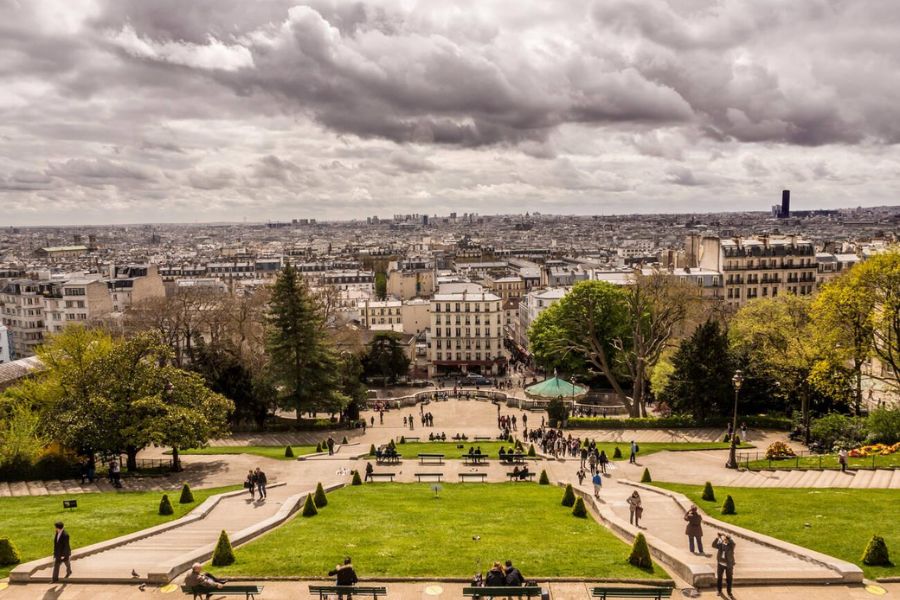
If you wander a bit, you’ll find the charming Musée de Montmartre, which often hosts workshops for families. Sometimes, street artists draw caricatures on Place du Tertre—kids love that. And of course, grabbing a crêpe from a stand keeps everyone happy.
Activities table:
Activity Good For Notes Funicular ride All ages Uses metro tickets Place des Abbesses carousel Young kids Central location Parks and picnic spots Families Great Sacré-Cœur views Musée de Montmartre School-age+ Creative workshops
Insider Tips for Avoiding Tourist Crowds
I always head out early in Montmartre. Walking Rue Lepic or climbing to Sacré-Cœur before 9 a.m., I see mostly locals and the morning light is just perfect for photos.
Weekdays feel much quieter—weekend afternoons get packed, especially when it’s tourist season. I skip the main staircase to Sacré-Cœur in the middle of the day and pick side streets like Rue du Chevalier de la Barre for a quieter climb.
Booking tickets or museum passes online helps dodge the lines, especially when it’s busy. When I want a break, I look for cafes away from the main squares. Even just a five-minute walk from Place du Tertre, you can find a peaceful spot for a meal.
Honestly, getting a little lost in Montmartre’s narrow lanes is the best way to find a quiet moment, even when the crowds hit.
Montmartre’s Culture and Nightlife Beyond the Dome
Montmartre isn’t just about its famous white basilica. The streets come alive at night with cabarets, art studios, cozy boutiques, and local markets that keep that old village spirit.
Moulin Rouge and Parisian Cabarets
When night falls, Montmartre transforms. The Moulin Rouge, with its bright red windmill, lights up Boulevard de Clichy. I remember waiting in line, feeling the buzz before the show.
Inside, the can-can dancers, sparkling costumes, and lively music make this place the heart of Parisian cabaret. Besides Moulin Rouge, I’ve found smaller cabarets tucked along the side streets—Le Chat Noir and Lapin Agile are two I like.
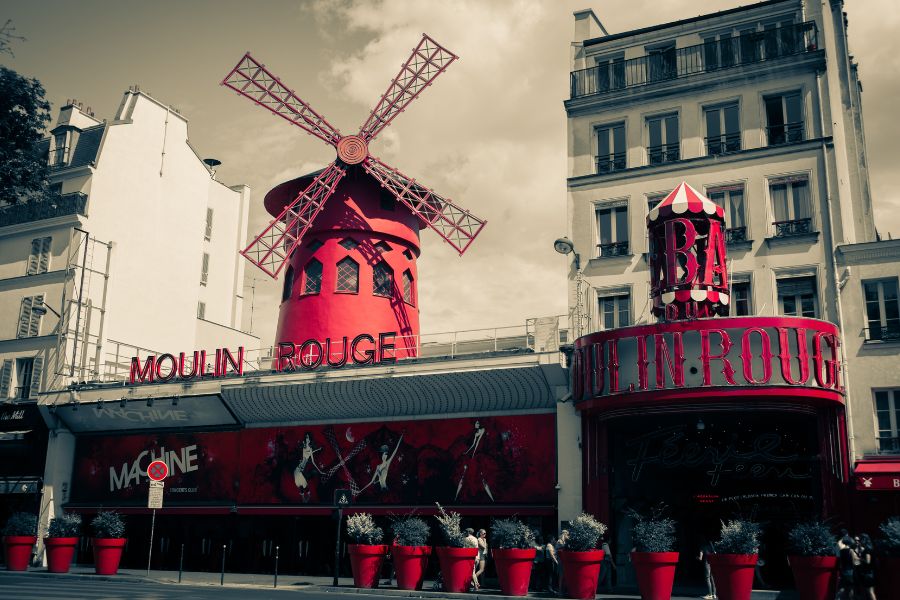
These spots offer songs, comedy, and a bit of old Paris charm. The crowds are a mix of locals and visitors, and the atmosphere always feels warm. If you want a real Parisian night out, cabarets like these have just the right mix of history and fun.
Art Exhibitions and Events
Montmartre’s creative pulse is still strong. On my walks, I spot artists setting up easels along Place du Tertre, painting city scenes or quick portraits.
Inside Espace Dalí, I wandered among surreal art and quirky sculptures that really pull you into Dalí’s world. Art galleries like Galerie Montmartre showcase new artists, and pop-up exhibitions or open-air fairs keep things fresh.
Events like the Grape Harvest Festival bring live music and parades, mixing local tradition with a party vibe.
Boutique Shopping and Local Markets
Montmartre’s streets are full of small boutiques and shops. I like browsing for handmade jewelry, vintage clothes, or art prints along Rue des Abbesses and Rue Tardieu.
Shop owners often greet you by name, and there’s no rush—it feels relaxed. The markets add even more flavor. I love wandering through the Marché Saint-Pierre for fabrics or picking up cheese, bread, and flowers at the open-air food stalls.
On weekends, street performers and musicians show up, turning a simple shopping trip into something memorable.
Tip:
| Market | What to Find |
|---|---|
| Marché Saint-Pierre | Fabrics, textiles, haberdashery |
| Marché de la Butte | Groceries, produce, local goods |
Connections to Le Marais and Other Paris Neighborhoods
Montmartre feels like a village, yet you can get to other neighborhoods without much fuss. Most days, I just walk or hop on the Metro down to Le Marais.
This district bursts with trendy shops, art galleries, and those amazing historic Jewish bakeries. The second you arrive, the vibe flips—Le Marais is busier, somehow cooler, and definitely more cosmopolitan.
Reaching central Paris from Montmartre? The Metro gets you there in about 10–15 minutes. I can visit places like the Louvre or the Latin Quarter so easily, it almost feels like cheating.

I really enjoy starting my mornings wandering Montmartre’s quiet streets. Then, I’ll check out a new cafe or dig through vintage shops in neighborhoods nearby.
But honestly, I always find myself heading back to Montmartre. Its culture and nightlife just feel different—nothing else in Paris quite matches it.

